Neutrally Buoyant Sediment Trap (NBST)
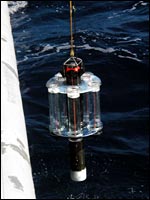 These devices were developed at WHOI by engineer Jim Valdes and scientific collaborators Drs. Jim Price, Ken Buesseler and Debbie Steinberg (VIMS). Their mission is to sink to a preprogrammed depth, catch sinking particles in the 5 attached clear tubes and then float back to the surface after 3-5 days. It may sound simple, but it is quite a balancing act to get these to sink to the exact depth we need. If we are off in our calculations by the weight of even a few quarters, the whole package can sink too deep and never return, or never sink at all! During VERTIGO, we'll have up to seven of these devices floating below and days later popping back up to the surface where they relay their position back to us on the ship via satellite.
These devices were developed at WHOI by engineer Jim Valdes and scientific collaborators Drs. Jim Price, Ken Buesseler and Debbie Steinberg (VIMS). Their mission is to sink to a preprogrammed depth, catch sinking particles in the 5 attached clear tubes and then float back to the surface after 3-5 days. It may sound simple, but it is quite a balancing act to get these to sink to the exact depth we need. If we are off in our calculations by the weight of even a few quarters, the whole package can sink too deep and never return, or never sink at all! During VERTIGO, we'll have up to seven of these devices floating below and days later popping back up to the surface where they relay their position back to us on the ship via satellite.
CTD
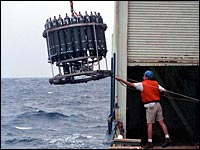 CTD is an acronym for the parameters that this device measures: “Conductivity, Temperature, and Depth.” The CTD itself is a set of small probes attached to a large metal rosette wheel (see image). The rosette is lowered on a cable down to the seafloor, and scientists observe the water properties in real time via a conducting cable connecting the CTD to a computer on the ship. The water temperature and salt content, or salinity (which is computed from the conductivity), is important to oceanographers because it tells us about the types of water masses present, and how they are moving in the ocean.
CTD is an acronym for the parameters that this device measures: “Conductivity, Temperature, and Depth.” The CTD itself is a set of small probes attached to a large metal rosette wheel (see image). The rosette is lowered on a cable down to the seafloor, and scientists observe the water properties in real time via a conducting cable connecting the CTD to a computer on the ship. The water temperature and salt content, or salinity (which is computed from the conductivity), is important to oceanographers because it tells us about the types of water masses present, and how they are moving in the ocean.
MOCNESS Plankton nets
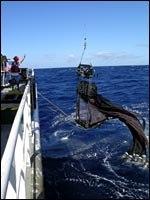 A series of opening and closing nets are lowered to depths of up to 1000m as part of the VERTIGO program. These MOCNESS tows provide samples of the mid to large marine zooplankton and other animals too slow to move out of the way. In fact on VERTIGO, we will be using not only the MOCNESS nets, but other styles of plankton nets that are lowered to depth and raised or towed slowly to collect an abundance of marine samples for biological identification and experiments on board with live animals.
A series of opening and closing nets are lowered to depths of up to 1000m as part of the VERTIGO program. These MOCNESS tows provide samples of the mid to large marine zooplankton and other animals too slow to move out of the way. In fact on VERTIGO, we will be using not only the MOCNESS nets, but other styles of plankton nets that are lowered to depth and raised or towed slowly to collect an abundance of marine samples for biological identification and experiments on board with live animals.
MULVFS
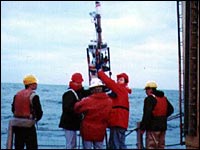 MULVFS is a multiply unit large volume filtration system developed by Dr. Jim Bishop and colleagues. A large winch is used to lower a power cable into the ocean to depths up to 1000m and up to 12 pumps are attached that filter 10,000 liters of seawater through filters of various sizes.
MULVFS is a multiply unit large volume filtration system developed by Dr. Jim Bishop and colleagues. A large winch is used to lower a power cable into the ocean to depths up to 1000m and up to 12 pumps are attached that filter 10,000 liters of seawater through filters of various sizes.
» More about MULVFS
“Clap” traps
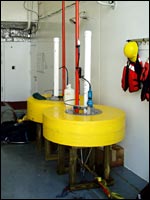 Our Clap traps are sediment trap moorings designed to collect sinking particles using simple collection tubes suspended in the ocean at a single depth. We use three to collect particles at depths of 150, 300 and 500 meters. They are so named because most upper ocean traps are open tubes of some design, but ours “clap” shut when the 3-5 day mission is over. They are also unique in that we use a pair of “holey sock” drogues (guess how they got their name) as a sea anchor, so that the tubes travel at a speed that is close to the water they are sitting in at depth (which is much slower than the surface ocean currents where the buoy floats).
Our Clap traps are sediment trap moorings designed to collect sinking particles using simple collection tubes suspended in the ocean at a single depth. We use three to collect particles at depths of 150, 300 and 500 meters. They are so named because most upper ocean traps are open tubes of some design, but ours “clap” shut when the 3-5 day mission is over. They are also unique in that we use a pair of “holey sock” drogues (guess how they got their name) as a sea anchor, so that the tubes travel at a speed that is close to the water they are sitting in at depth (which is much slower than the surface ocean currents where the buoy floats).
The “Splitter”
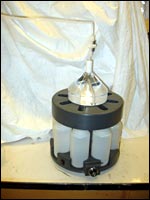 This may look like a simple device, but it’s the Cadillac of sample “splitters”. The idea is that each scientist wants to be analyzing chemical and biological properties of the exact same material that is caught in our sediment trap. On a rocking and rolling ship, that means we want to combine material from each of the 5 collection tubes from one depth (there is not enough material in one tube, and sometimes, tube to tube variability in flux complicates the story). This mix of water and particles from the sediment trap tubes is shaken and gently gravity fed into the top of the splitter. The clear plastic top spins rapidly over the openings of 8 plastic bottles below, and thus delivers within a few tenths of a percent, the same amount of particles in solution to each container. The next step is filtration and processing of the samples in as many as 7 different ways. We use three different filter types, some of which are dried and some frozen in liquid nitrogen to preserve them for analyses on shore. The 8th sample is left in solution with preservative as a library of sorts from each collection. All of this work is conducted inside of a clean air bench, a space on a regularly dirty ship, where filtered air alone passes over the bench space where we are handling our precious sediment trap samples.
This may look like a simple device, but it’s the Cadillac of sample “splitters”. The idea is that each scientist wants to be analyzing chemical and biological properties of the exact same material that is caught in our sediment trap. On a rocking and rolling ship, that means we want to combine material from each of the 5 collection tubes from one depth (there is not enough material in one tube, and sometimes, tube to tube variability in flux complicates the story). This mix of water and particles from the sediment trap tubes is shaken and gently gravity fed into the top of the splitter. The clear plastic top spins rapidly over the openings of 8 plastic bottles below, and thus delivers within a few tenths of a percent, the same amount of particles in solution to each container. The next step is filtration and processing of the samples in as many as 7 different ways. We use three different filter types, some of which are dried and some frozen in liquid nitrogen to preserve them for analyses on shore. The 8th sample is left in solution with preservative as a library of sorts from each collection. All of this work is conducted inside of a clean air bench, a space on a regularly dirty ship, where filtered air alone passes over the bench space where we are handling our precious sediment trap samples.
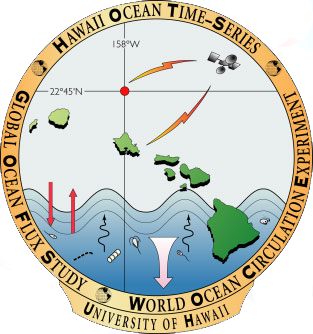
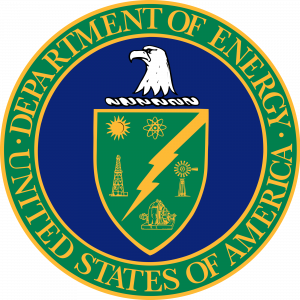

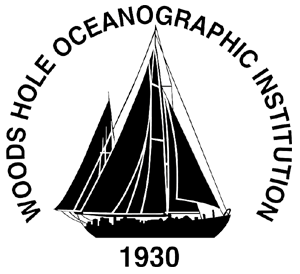
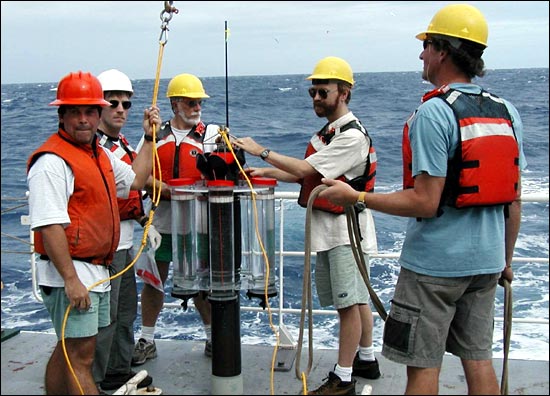
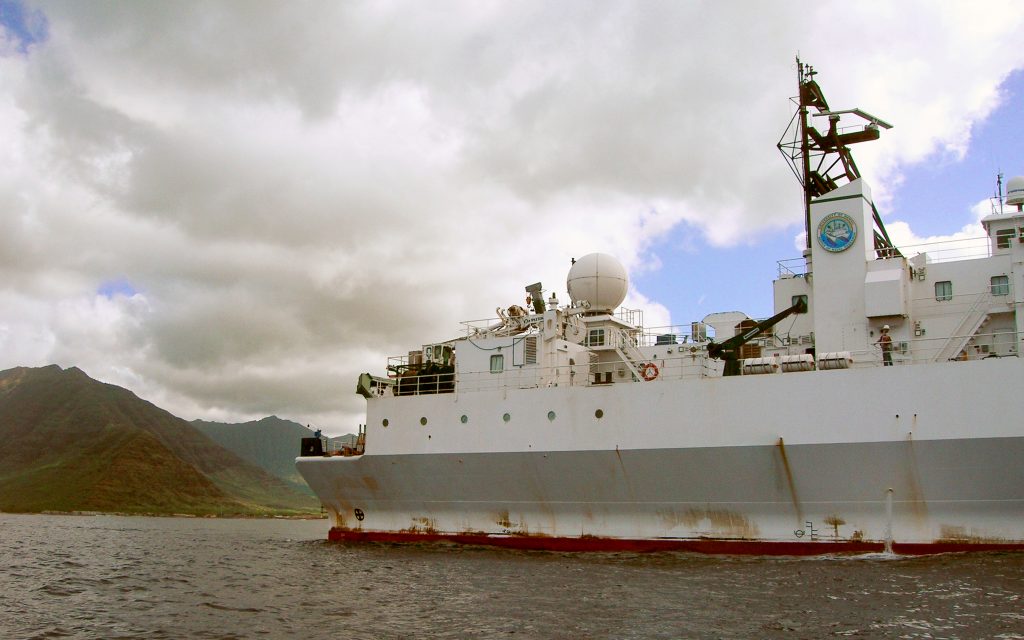
 These devices were developed at WHOI by engineer Jim Valdes and scientific collaborators Drs. Jim Price, Ken Buesseler and Debbie Steinberg (VIMS). Their mission is to sink to a preprogrammed depth, catch sinking particles in the 5 attached clear tubes and then float back to the surface after 3-5 days. It may sound simple, but it is quite a balancing act to get these to sink to the exact depth we need. If we are off in our calculations by the weight of even a few quarters, the whole package can sink too deep and never return, or never sink at all! During VERTIGO, we'll have up to seven of these devices floating below and days later popping back up to the surface where they relay their position back to us on the ship via satellite.
These devices were developed at WHOI by engineer Jim Valdes and scientific collaborators Drs. Jim Price, Ken Buesseler and Debbie Steinberg (VIMS). Their mission is to sink to a preprogrammed depth, catch sinking particles in the 5 attached clear tubes and then float back to the surface after 3-5 days. It may sound simple, but it is quite a balancing act to get these to sink to the exact depth we need. If we are off in our calculations by the weight of even a few quarters, the whole package can sink too deep and never return, or never sink at all! During VERTIGO, we'll have up to seven of these devices floating below and days later popping back up to the surface where they relay their position back to us on the ship via satellite. CTD is an acronym for the parameters that this device measures: “Conductivity, Temperature, and Depth.” The CTD itself is a set of small probes attached to a large metal rosette wheel (see image). The rosette is lowered on a cable down to the seafloor, and scientists observe the water properties in real time via a conducting cable connecting the CTD to a computer on the ship. The water temperature and salt content, or salinity (which is computed from the conductivity), is important to oceanographers because it tells us about the types of water masses present, and how they are moving in the ocean.
CTD is an acronym for the parameters that this device measures: “Conductivity, Temperature, and Depth.” The CTD itself is a set of small probes attached to a large metal rosette wheel (see image). The rosette is lowered on a cable down to the seafloor, and scientists observe the water properties in real time via a conducting cable connecting the CTD to a computer on the ship. The water temperature and salt content, or salinity (which is computed from the conductivity), is important to oceanographers because it tells us about the types of water masses present, and how they are moving in the ocean. A series of opening and closing nets are lowered to depths of up to 1000m as part of the VERTIGO program. These MOCNESS tows provide samples of the mid to large marine zooplankton and other animals too slow to move out of the way. In fact on VERTIGO, we will be using not only the MOCNESS nets, but other styles of plankton nets that are lowered to depth and raised or towed slowly to collect an abundance of marine samples for biological identification and experiments on board with live animals.
A series of opening and closing nets are lowered to depths of up to 1000m as part of the VERTIGO program. These MOCNESS tows provide samples of the mid to large marine zooplankton and other animals too slow to move out of the way. In fact on VERTIGO, we will be using not only the MOCNESS nets, but other styles of plankton nets that are lowered to depth and raised or towed slowly to collect an abundance of marine samples for biological identification and experiments on board with live animals. MULVFS is a multiply unit large volume filtration system developed by Dr. Jim Bishop and colleagues. A large winch is used to lower a power cable into the ocean to depths up to 1000m and up to 12 pumps are attached that filter 10,000 liters of seawater through filters of various sizes.
MULVFS is a multiply unit large volume filtration system developed by Dr. Jim Bishop and colleagues. A large winch is used to lower a power cable into the ocean to depths up to 1000m and up to 12 pumps are attached that filter 10,000 liters of seawater through filters of various sizes. Our Clap traps are sediment trap moorings designed to collect sinking particles using simple collection tubes suspended in the ocean at a single depth. We use three to collect particles at depths of 150, 300 and 500 meters. They are so named because most upper ocean traps are open tubes of some design, but ours “clap” shut when the 3-5 day mission is over. They are also unique in that we use a pair of “holey sock” drogues (guess how they got their name) as a sea anchor, so that the tubes travel at a speed that is close to the water they are sitting in at depth (which is much slower than the surface ocean currents where the buoy floats).
Our Clap traps are sediment trap moorings designed to collect sinking particles using simple collection tubes suspended in the ocean at a single depth. We use three to collect particles at depths of 150, 300 and 500 meters. They are so named because most upper ocean traps are open tubes of some design, but ours “clap” shut when the 3-5 day mission is over. They are also unique in that we use a pair of “holey sock” drogues (guess how they got their name) as a sea anchor, so that the tubes travel at a speed that is close to the water they are sitting in at depth (which is much slower than the surface ocean currents where the buoy floats). This may look like a simple device, but it’s the Cadillac of sample “splitters”. The idea is that each scientist wants to be analyzing chemical and biological properties of the exact same material that is caught in our sediment trap. On a rocking and rolling ship, that means we want to combine material from each of the 5 collection tubes from one depth (there is not enough material in one tube, and sometimes, tube to tube variability in flux complicates the story). This mix of water and particles from the sediment trap tubes is shaken and gently gravity fed into the top of the splitter. The clear plastic top spins rapidly over the openings of 8 plastic bottles below, and thus delivers within a few tenths of a percent, the same amount of particles in solution to each container. The next step is filtration and processing of the samples in as many as 7 different ways. We use three different filter types, some of which are dried and some frozen in liquid nitrogen to preserve them for analyses on shore. The 8th sample is left in solution with preservative as a library of sorts from each collection. All of this work is conducted inside of a clean air bench, a space on a regularly dirty ship, where filtered air alone passes over the bench space where we are handling our precious sediment trap samples.
This may look like a simple device, but it’s the Cadillac of sample “splitters”. The idea is that each scientist wants to be analyzing chemical and biological properties of the exact same material that is caught in our sediment trap. On a rocking and rolling ship, that means we want to combine material from each of the 5 collection tubes from one depth (there is not enough material in one tube, and sometimes, tube to tube variability in flux complicates the story). This mix of water and particles from the sediment trap tubes is shaken and gently gravity fed into the top of the splitter. The clear plastic top spins rapidly over the openings of 8 plastic bottles below, and thus delivers within a few tenths of a percent, the same amount of particles in solution to each container. The next step is filtration and processing of the samples in as many as 7 different ways. We use three different filter types, some of which are dried and some frozen in liquid nitrogen to preserve them for analyses on shore. The 8th sample is left in solution with preservative as a library of sorts from each collection. All of this work is conducted inside of a clean air bench, a space on a regularly dirty ship, where filtered air alone passes over the bench space where we are handling our precious sediment trap samples.